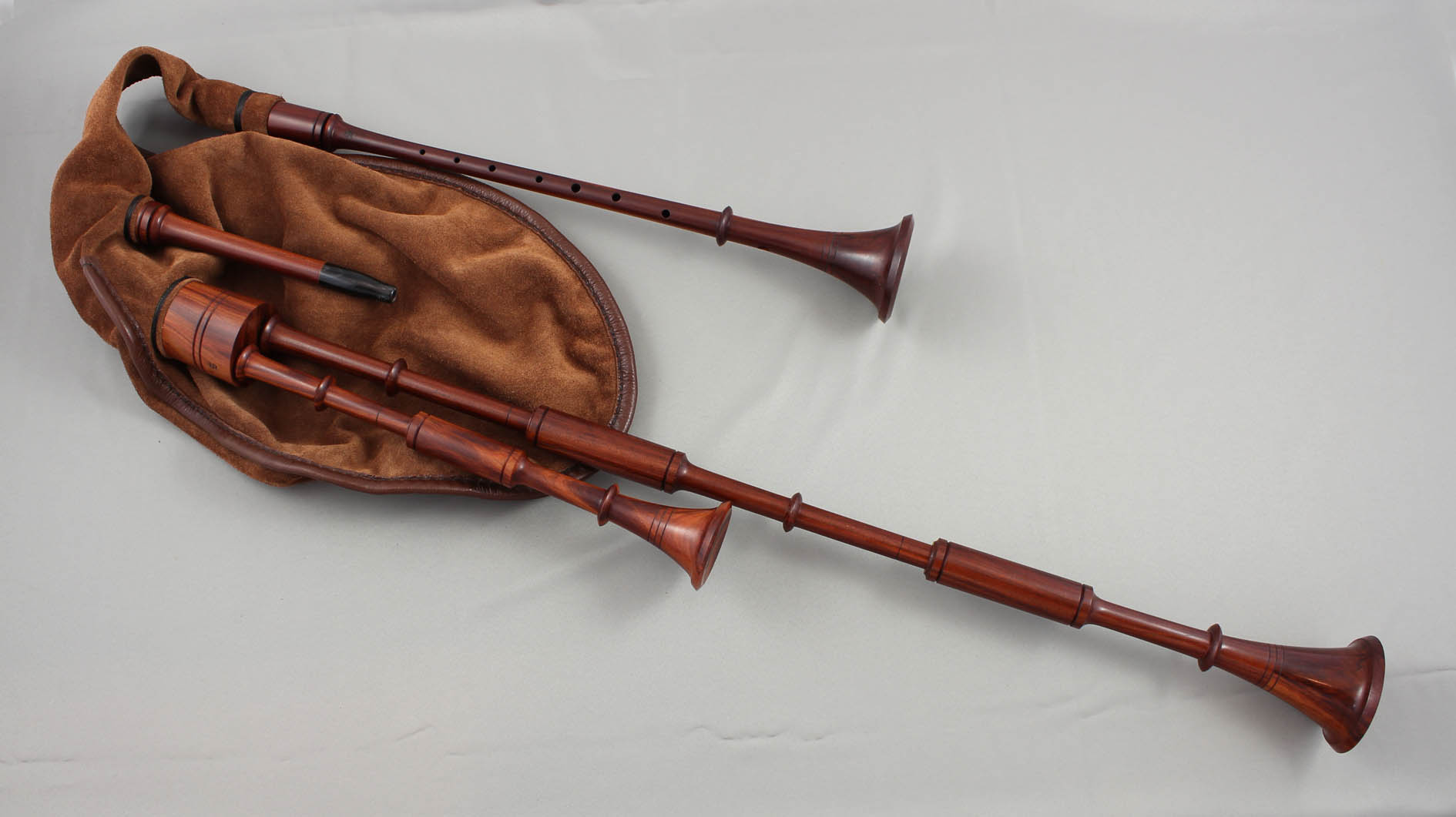The Bagpipe Society
Guide to the Medieval Bagpipes

Bagpipes first appeared in Europe, in a form that we clearly recognise, around the 12th century. Early depictions show pipes with no drones but by the 14th century they were almost always depicted with the addition of a single drone.
Chaucer tells us that bagpipes were a feature of medieval English life: the Miller pipes his fellow pilgrims on their way in the Canterbury Tales. Images tell us that medieval pipes were mouth blown, usually had a conical bore, a single drone and a large round bag. They were probably loud, in other words. No examples have survived and the historical images and carvings are not necessarily true to life.
Various makers have reconstructed medieval pipes. Julian Goodacre makes a Greatpipe, with loud conical chanter and a long, eye-catching, flared drone, based on a 15th century illustration of the Miller.
Jim Parr makes a medieval pipe based on the Gallician Gaita, the pipe still played in the North West region of Spain in an unbroken tradition going back to the Middle Ages. And Jon Swayne adapts the externals of his English Border-style pipes to make them look medieval (flared ends, large bag etc), while keeping the benefits of a modern chanter design. There is a lot of interest in so-called medieval bagpipes, particularly in Germany where the early music scene is very strong.
The geometry of a large bag can make Medieval Pipes slightly harder to grapple with than their modern counterparts, but they are ideal for anyone involved in re-enactment, living history or playing in a costume band.
- Data Processing Notice (GDPR)
@BagpipeSociety on X (formally known as Twitter)
TheBagpipeSociety on Instagram
 BagpipeSociety on Facebook
BagpipeSociety on Facebook
Something wrong or missing from this page? Let us know!
